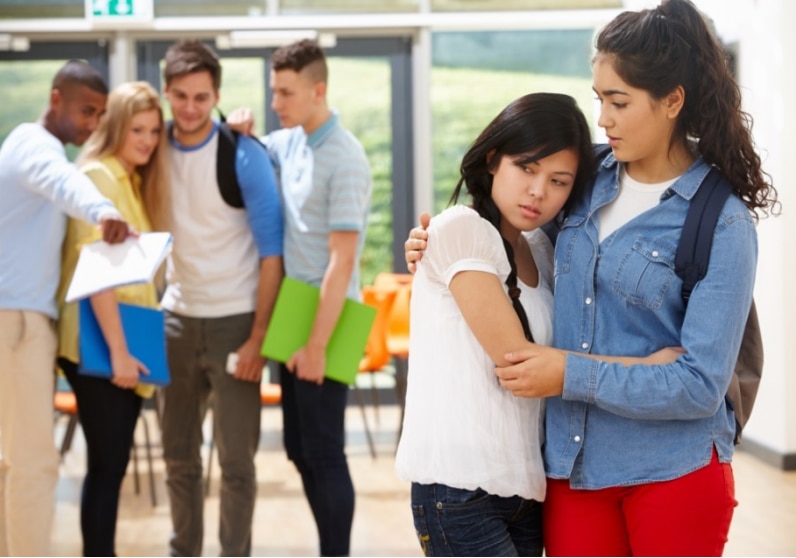Understanding
Youth often ask: "What can I do to help stop bullying?" and "How can I protect myself from being bullied?" These are difficult questions to answer, and sometimes parents, teachers, and principals struggle to address them.
Protective Factors

One of the best ways that youth can protect themselves against being bullied is through healthy friendships and positive relationships with classmates.
Research also indicates that having positive relationships with teachers is associated with a reduced risk of being bullied
Youth can also reduce their exposure to environments in which bullying frequently occurs such as areas of schools with poor adult supervision or in social media settings where negative and hurtful communication occurs. In those instances where youth are in these environments, they should take extra caution, such as walking between classes with friends or a supportive peer, and protecting their identity online and the information they share electronically.
New and Innovative Strategies
Although research on this topic is emerging, efforts to deflect bullying may also be effective in some situations. Deflecting is doing something to take away the power of bullying and make the behavior less effective. For example, youth with strong social skills can use humor to deflect bullying. One study found that using humor or “telling a joke” was a more effective response to bullying than some of the more typical responses, like pretending not to be bothered, depersonalizing, retaliating, telling the aggressor to stop, appealing to the aggressor’s empathy, walking away, telling an adult at home, telling an adult at school, and telling a friend.
Here are a few ways that have been shown to be effective in responding to bullying and cyberbullying that youth can use:
Specific Strategies Youth Can Use to Deal with Bullying
- Seek assistance from an adult, friend, or classmate when a potentially threatening situation occurs.
- Be assertive (not aggressive, fighting, or teasing back) when possible.
- Use humor to deflect a potential threatening situation.
- Avoid unsafe places or walk away before a potential bullying encounter occurs.
- Agree with or “own” a belittling comment to defuse it.
- Walk with friends or a small group of friendly peers.
- Use positive self-statements to maintain positive self-esteem during an incident.
- Avoid getting emotionally upset when bullying occurs, as this may embolden the person bullying.
Strategies Youth Can Use to Prevent Cyberbullying
- Never accept friend or network requests from unfamiliar people.
- Use the “mom” principle: Do not post or share photographs or movies that you would not be willing to share with your mother, father, or another important caregiver.
- Follow the “forever” principle: Assume that everything you put online will be there forever.
- Follow the “no privacy” principle: Assume that everyone can access information about you in cyberspace.
- Follow the “ex” principle: Would you be okay with your ex-boyfriends or girlfriends having access to content that you are planning to share?
- Block threatening or questionable people from seeing your profile and personal information.
- Do not post provocative, scandalous, or inflammatory remarks online.
- Do not reply to or retaliate against incidents of cyberbullying.
- Regularly change passwords to sites and applications, and immediately delete profiles that have been hacked.
- Avoid sites, networks, and applications that have poor security, provide easy access to personal information, or encourage interactions among strangers.
- Ensure that information is approved before it is posted or shared socially.
- Limit involvement in social networking to a few familiar sites.
- Avoid joining sites that do not have adequate privacy settings.
- Never engage in sexting (sharing pictures or messages that have private sexual content).

